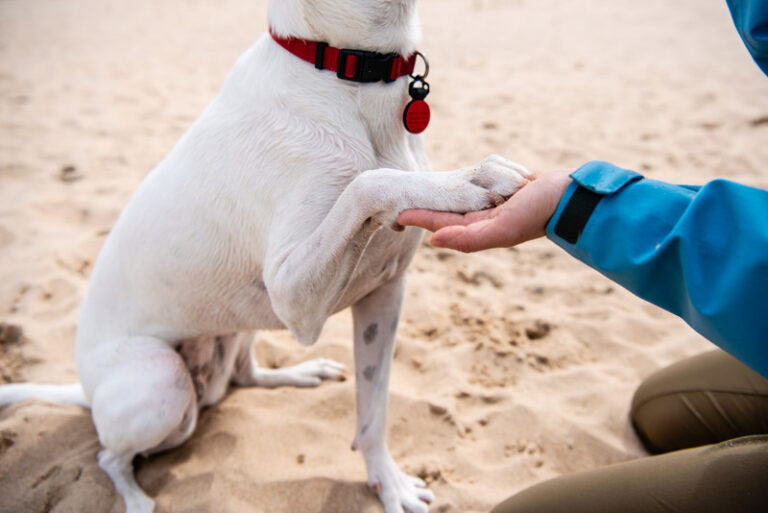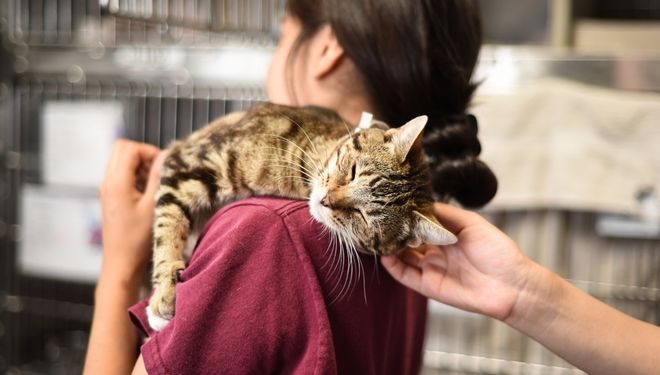What options are available to you if you find a lost dog? In most places in the U.S., you have four options: 1. Drop the dog off at the municipal shelter that serves your area. 2. Call animal control and have them pick up the dog. 3. Hold on to the dog and try to find the owner yourself. 4. Ignore the dog and let it go. Before 1, 2 or 3 though, it is important to ask, is this dog really lost?
These options are all problematic. Options 1 and 2 require taking the dog out of their neighborhood and transporting it to an offsite location, sometimes many miles from its home. Once the dog leaves its community, it can be difficult to get it home. Typically, only one in four dogs ever makes it back home. Reclaim fees, long distance to the shelter, fear of animal services and many other factors contribute to people not reclaiming their dogs. The shelters that have the most sophisticated and successful return programs have gotten up to 45 percent of impounded dogs home, but for most shelters, that number is still very low, around 15 or 20 percent. Option 3 puts the entire burden of getting the dog home on the finder, who may not know about all of the available resources or have the time to make found posters and post found information online. Option 4 isn’t feasible or ideal when a dog is in distress, is truly lost, is injured or sick, or otherwise really needs the help of a Good Samaritan.
So what should a community expect from their government in terms of help? One of the most important functions of animal services is to help lost dogs. Have you ever seen a dog running down the side of a busy, multi-lane road, panting and anxiously looking for safety? At Pima Animal Care Center, our animal protection officers help save dogs that have found themselves lost, afraid and often injured, on an almost-daily basis. Our shelter serves as a very short term crisis housing center for dogs in distress who get picked up by a community member or an officer. However, at the same time, we recognize that many dogs are simply hanging out in their neighborhoods, just a house or two away from where they live, and we may be able to get those dogs home more easily if we don’t remove them from their communities. We must begin to really question whether that dog truly needs help at all. Over the past two decades, animal welfare has come so far when it comes to innovation and we’re long overdue for rethinking our approach to lost dogs. Here are some starting points:
Create and implement a stray dog intake needs assessment.
Imagine someone finds a stray dog. It appears healthy and is wagging its tail. They find their local shelter’s website and read that they can call or text the shelter and file a found report. They text the shelter and someone texts them right back. The shelter asks them several questions, including where the dog was found; if it has any injuries or appears to be sick; if the dog is friendly; if it has identification; if the finder is willing to hold the dog for up to 72 hours to help us try to get it home. If the dog is sick or injured, poses any threat to public safety, is not safe to handle, or is in immediate danger; or the finder cannot hold it, then the best place for that dog is likely the shelter. If the dog is healthy and friendly and the finder is willing to hold it for a short time, that’s where the animal services organization can really kick into action!
Get that dog home!
If the finder is willing to hold on to a found dog, the animal services organization can do a number of things to help that dog get home faster. First, create a found report and get it published online right away. Second, staff or volunteers can post the dog’s information on social media sites like Facebook lost and found pages, Craigslist, and Finding Rover. You can email the finder a printable FOUND sign or print signs yourself and ask volunteers to post them in the area. Share a ‘getting lost pets home’ tips sheet or email with finders and ask them to go to the nearest participating veterinarian, fire station or other business who will scan the dog for a microchip. Just because someone is willing to hold the dog, doesn’t mean there aren’t lots of things staff and volunteers can do to help them. Staff and volunteers can cross check lost and found reports in an effort to increase reunification. Can you imagine how fast you could get dogs home if you provided all this help to stray finders and provide excellent, prompt service to locate owners?
Ask for help but don’t create a black and white policy.
We are here to serve the public and there really are stray dogs who need to come to the shelter. If your goal is to intake the dogs who really need to come in while helping dogs get home and stay in the community any time it’s possible, you will need to use a case management approach. Explain to the community WHY you’re trying to reduce the number of stray dogs who enter the shelter, and earnestly ask for help. There will always be some people who just will not want to hold a stray dog they have found and so we need to think about how to help those dogs, too. Can you create a stray found-to-foster program in your high intake neighborhoods? Can you engage other people in the area to hold those strays? You could even give these people spay/neuter, vaccine and microchip vouchers to give to the owners once the dog is returned. Most communities aren’t yet trying these strategies, but they should be. Serving as a resource does not always mean a dog needs to come to the shelter, there are so many creative and innovative ways to be of service that are better for the dogs and the people who love them.
Field Services must reimagine their role in the community.
So often, animal control agencies have archaic policies mandating that all dogs found by officers be impounded. It is time for a more proactive and humane approach in reuniting lost dogs with their families. Officers should be required to scan for a chip in the field and if possible, start lost pet alerts via the microchip when applicable, complete found reports and publish them immediately instead of resorting to impoundment as a first resort. Something as simple as knocking on doors in the area and enlisting help from the neighbors is much less costly than impoundment and also serves to build bridges with community members. Being seen as genuinely wanting to do what is best has the potential to exponentially change public perception.
Communicate constantly with your community.
Tell them how many stray dogs are coming into the shelter and why bringing a dog to the shelter isn’t always the best solution. Tell them how they can help by holding a lost dog and what services you offer to get those dogs home. Track your data to learn what the return rate is of dogs who do NOT come to the shelter, but stay in a home instead. It’s likely to be much higher and you can use this to explain why you are asking for their help. Talk to people about the importance of securing their fences and offer fence building and fence repair assistance to help prevent dogs from getting loose. Tell the stories of injured and sick stray dogs who you helped and also tell stories of the local heroes who found a dog, held it, and helped to get it home. Talk about how you’re working to address the root causes that lead to dogs getting out of their homes and yards. Tell people how they can help. We have spent more than 100 years telling people to bring every stray dog to the shelter. Now we have to do the work of asking our communities to be part of the solution to keep and get dogs home. We can only do this successfully if everyone on our teams has the same elevator speech and the manner in which we deliver the information elicits a desire to help.
As we build a whole, new range of services to help keep dogs in their homes and neighborhoods and reduce the number of dogs entering the shelter, we should also use the tools and resources available to help get as many dogs as possible identified. Animal services should provide both microchips and tags on a voluntary basis because proactive identification is the best option we have to reduce shelter intake and make sure we get dogs back with their owners as quickly as possible. Microchips should be registered at time of implant on behalf of the owner. Shelters that follow this protocol have the highest return to owner rates in the country. An entire campaign built around increasing pet identification and investing on the front end is far less costly than the price of impoundment.
Your expertise and ideas are needed! As we begin to rethink what the future of animal services and helping lost dogs could look like, we need help and input from everyone working in animal shelters who is finding success or struggle in getting dogs home. E-mail us at
hass-project@americanpetsalive.org to share your thoughts and ideas.








